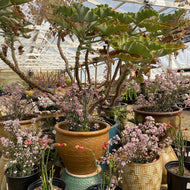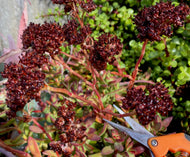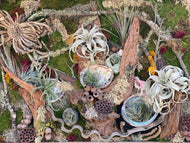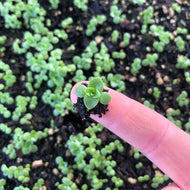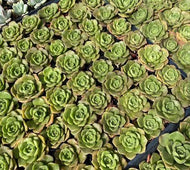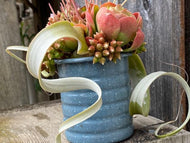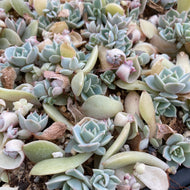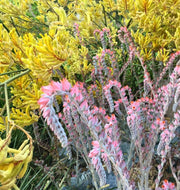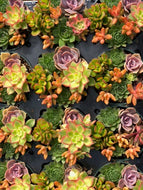
Depending on the soil type, exposure, and variety, established succulents can use about 1/4 of the water and fertilizer required for typical landscape plantings, Deeper and more infrequent watering will establish a deeper, more vigorous root system that is more tolerant of drought between rain or irrigation than constant, light watering.
I typically aim for watering 1 or two times per week as a new garden is establishing (keep your eye on the plants through this stage, as some might need a little supplemental help). I then try to back off to watering one time per week, maximum, for 15-20 minutes. This plan seems to comply with most of the restrictions we are seeing right now, but be sure to check with your local water agency. This watering program also accommodate a garden planted with succulents and an array of other landscape and native plants tolerant of summer-drought. In well established plantings, it can be better to reduce the watering even further, especially with our California natives!
Building the soil correctly will also improve the drought tolerance of your landscape, and is an important step in planning garden areas.
We would be glad to work with you and your landscape professionals on how to address specific conditions. so that your garden stays healthy.
Succulents tend to need good drainage, so mounding up the planting area, creating a bit of a raised bed, and mixing in organic matter will help succulents grow well, even if the native soil in your area is heavy clay.
Here at the nursery, we have relatively sandy soils, which most succulents seem to love! Sandy soils typically require more frequent watering and fertilizer applications than clay soils, as there are fewer nutrients in the soil much less water retention. Groundcovers and topdressings of pebbles or mulch lock in the moisture and protect the roots of your plants.
Keep in mind that not all succulents need the same conditions. I like to try to think about what a species receives in its native climate, and try to translate that those parameters to the garden.

